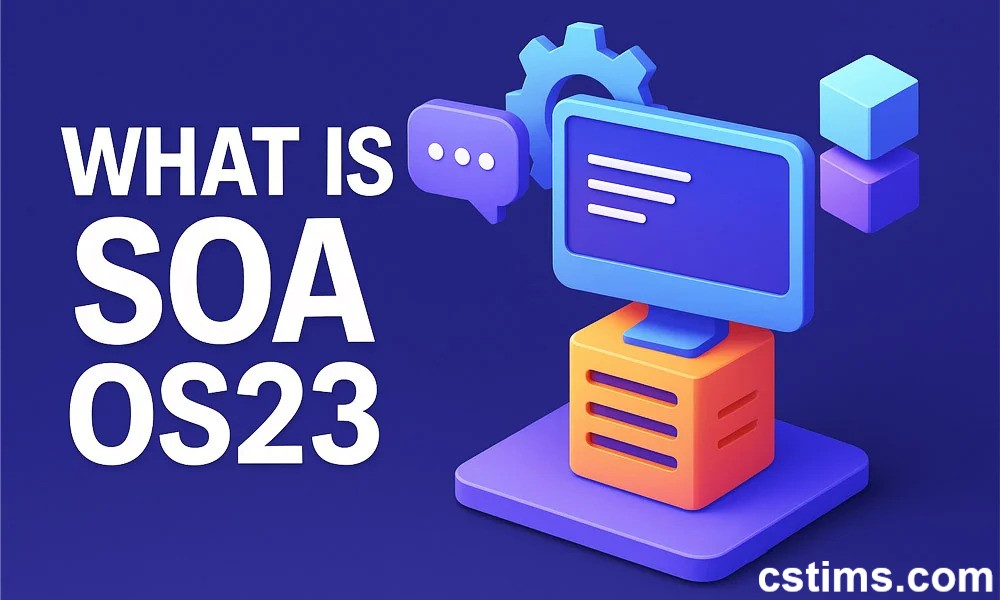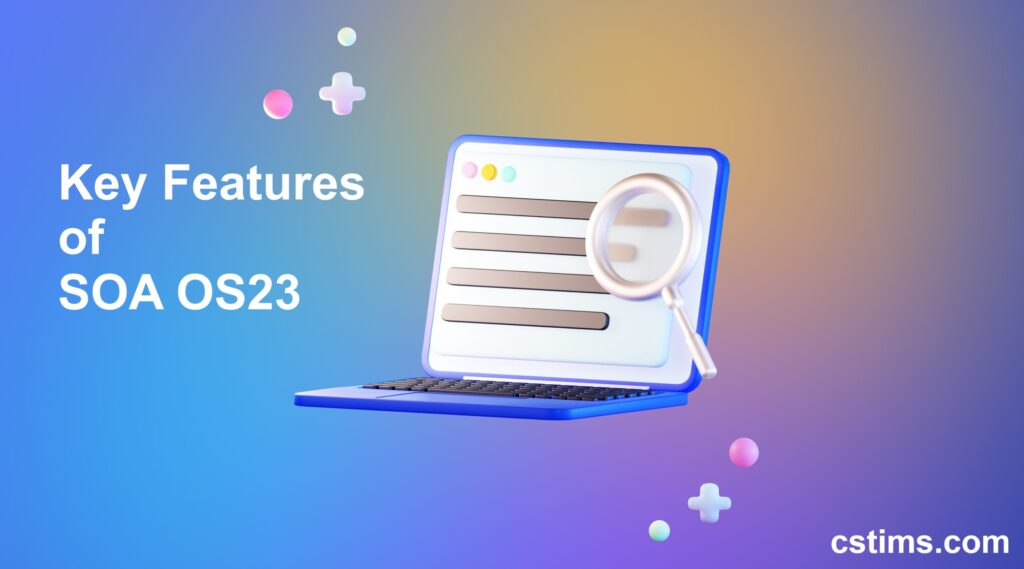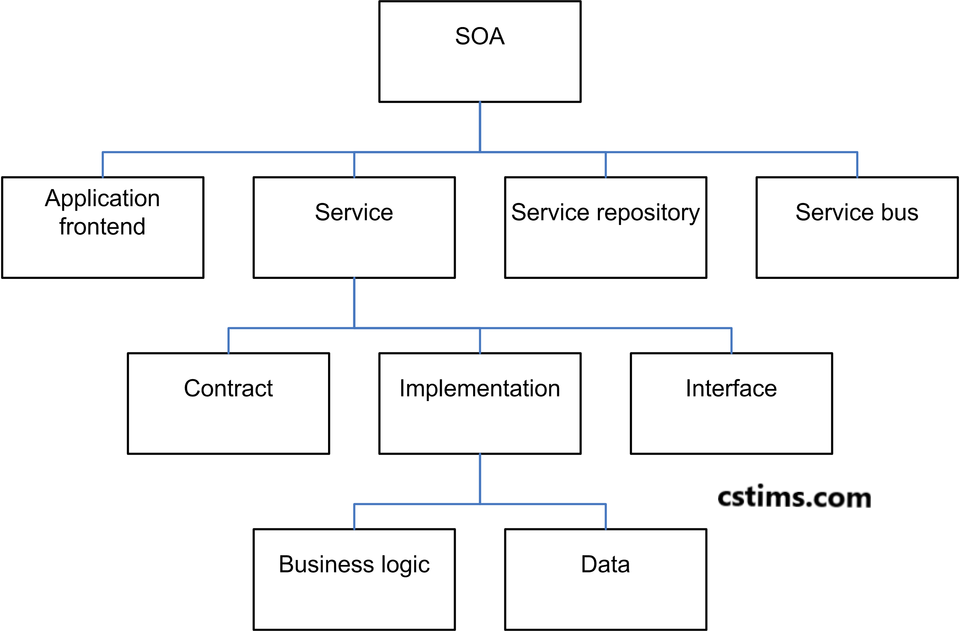Introduction
SOA OS23 is ushering in a groundbreaking evolution in distributed computing, redefining how modern enterprises build, manage, and scale microservices and cloud-native applications. Built from the ground up with a service-first philosophy, SOA OS23 functions like an intelligent operating system layer, tailored for today’s cloud, IoT, and edge workloads. It fuses service orchestration, smart automation, and deep governance into a unified and agile runtime environment.
Whether you’re an enterprise architect, DevOps engineer, or cloud strategist, understanding SOA OS 2023 is critical to future-proofing your technology stack.
What is SOA OS23?
SOA OS23 stands for Service-Oriented Architecture Operating System 2023. It’s not a traditional OS like Linux or Windows, but a service-optimized microkernel system that abstracts complexity while enabling secure, intelligent, and scalable operations across distributed systems. At its core, SOA OS 2023 integrates a built-in service mesh, API gateway, policy engine, and event-driven infrastructure.
Unlike traditional OSes or even container orchestration tools like Kubernetes, SOA OS23 manages services as first-class citizens with built-in discovery, health checking, policy enforcement, and lifecycle automation. This approach is especially relevant as modern technologies like BlockDAG and Rexas Finance demand more dynamic, scalable, and self-governing infrastructures to support real-time transactions and decentralized systems.

What is SOA?
Service-Oriented Architecture (SOA) is a software design pattern where applications are built using independent, reusable services that perform specific business functions. These services communicate over a network using standard protocols, allowing different systems to work together seamlessly. SOA promotes flexibility, scalability, and easier maintenance by enabling services to operate independently. It is commonly used in enterprise environments to support integration, interoperability, and faster development.
Key Features of SOA OS23
SOA OS 2023 is designed to streamline modern service architecture with built-in intelligence, automation, and security. Here are its standout capabilities:
Native Service Management
SOA OS 23 offers built-in service registration, discovery, and health monitoring without relying on external tools. Services are automatically managed and updated throughout their lifecycle. This simplifies operations and improves uptime in distributed environments.
Intelligent API Gateway
The intelligent API gateway in SOA OS 2023 supports REST, gRPC, and MQTT protocols natively. It handles authentication, routing, and rate limiting without third-party integrations. This enables secure and efficient communication across all services.
Microkernel Core
At the heart of SOA OS23 is a compact microkernel designed for speed and flexibility. It offloads core functions like networking and logging to lightweight, pluggable modules. This reduces resource usage and improves scalability across devices.
Contextual Event Handling
SOA OS 2023 responds to real-time events based on user behavior, location, or system state. This context-aware architecture allows services to trigger actions dynamically. It’s especially powerful for IoT, automation, and adaptive user experiences.
Policy-Driven Security
Security is deeply integrated into SOA OS23 with policy-based access, encryption, and compliance controls. Rules are enforced at the service level, ensuring consistent protection. It supports zero-trust principles and real-time governance enforcement.
Cloud and Edge Ready
SOA OS23 is optimized for hybrid deployments across cloud data centers and edge nodes. Its lightweight footprint and modularity make it ideal for constrained environments. It ensures consistent performance, even in distributed or offline scenarios.

Difference between SOA and SOA OS23
Service-Oriented Architecture (SOA) is a software design model that structures applications as a set of independent, reusable services that communicate over a network using standard protocols. It provides flexibility and interoperability but often requires multiple external tools for service discovery, security, and orchestration. In contrast, SOA OS23 is a next-generation operating system built to automate and simplify the implementation of SOA. It includes built-in features like service discovery, lifecycle management, policy enforcement, and contextual event handling, all within the OS itself. While SOA is a conceptual architecture, SOA OS23 is the practical, all-in-one platform that brings SOA to life with automation, scalability, and system-level intelligence.
Key Differences at a Glance:
| Feature | SOA | SOA OS23 |
|---|---|---|
| Type | Architectural concept | Operating system/platform |
| Implementation | Requires external tools | All-in-one integrated features |
| Service Management | Manual or tool-dependent | Native, automated |
| Scalability | Possible but complex | Built-in and dynamic |
| Ideal For | Enterprise systems | Cloud-native, edge, IoT systems |
| Learning Curve | Moderate | Steeper due to the new architecture |
How SOA OS23 Differs from Traditional Architectures
While Kubernetes and service meshes still dominate, they can be resource-intensive and fragmented. SOA OS23, in contrast, offers a unified platform that blends orchestration, policy, and observability at the OS level.
-
One Layer, All Services, No need for Istio, Envoy, or sidecar proxies. SOA OS 2023 handles it internally.
-
Simplified DevOps, Developers deploy via declarative manifests. Operations are automated through built-in lifecycle policies.
-
Lower Overhead, The microkernel architecture of SOA OS 2023keeps the system lean (<10MB core) while remaining highly extensible.
Real-World Applications of SOA OS23
FinTech
SOA OS 2023 powers real-time trading systems with zero-downtime upgrades, dynamic scaling, and ultra-low latency event processing.
IoT and Edge
Its lightweight footprint makes SOA OS 2023 ideal for industrial IoT hubs and 5G edge nodes. It manages distributed workloads without a heavy orchestrator.
Healthcare
Hospitals use SOA OS 2023 for secure, policy-enforced patient data sharing, automating compliance with HIPAA and GDPR in real time.
SOA OS23 vs Kubernetes Stack
| Feature | SOA OS23 | Kubernetes + Mesh |
|---|---|---|
| Install Size | < 20MB | 300MB+ |
| Service Discovery | Built-In | External (e.g., CoreDNS, Envoy) |
| Governance | Native Policies | Manual Add-on |
| Event Handling | Context-Aware | Needs Kafka/Custom |
| Ideal Use | Cloud/Edge | Mostly Cloud |
One of the strongest reasons to adopt SOA OS 2023 is its built-in support for zero-trust security, encrypted communication, audit trails, and ethical governance policies. All access is mediated through identity-aware gateways, and all service calls can be logged, validated, and policy-checked in real time. This level of detailed monitoring and governance is critical when comparing analytics platforms like SparkTraffic vs ClickSeo.io, where secure, transparent data handling and compliance are essential for trust and performance.

Developer and DevOps Support in SOA OS23
SOA OS 2023 includes a rich SDK, declarative DSL (Domain-Specific Language), and GUI-based service graph visualizers. Deployment pipelines can integrate with GitOps, and services can be hot-patched without downtime.
Tools and extensions are available for
- GitHub Actions
- Jenkins
- Prometheus
- Grafana
- BentoML and Ray Serve (for AI inference)
Future of SOA OS23
The roadmap for SOA OS 2023 includes support for
- RISC-V embedded platforms
- AI-optimized service routing
- Federated identity support
- WebAssembly (WASM) service modules
Adoption is growing in financial services, manufacturing, telecom, and AI inference platforms, highlighting that SOA OS 2023 is far more than a niche experiment.
Conclusion
SOA OS23 is not just another tech trend; it’s a paradigm shift in how we architect and operate services. Its built-in intelligence, policy-first approach, and seamless scalability make it a powerful choice for modern digital systems. From cloud to edge, SOA OS 2023 offers unmatched flexibility, speed, and security.
For organizations ready to move beyond traditional orchestration, SOA OS23 is the future-ready solution. With its modular design and service-first logic, it enables enterprises to scale smarter, govern better, and innovate faster.


